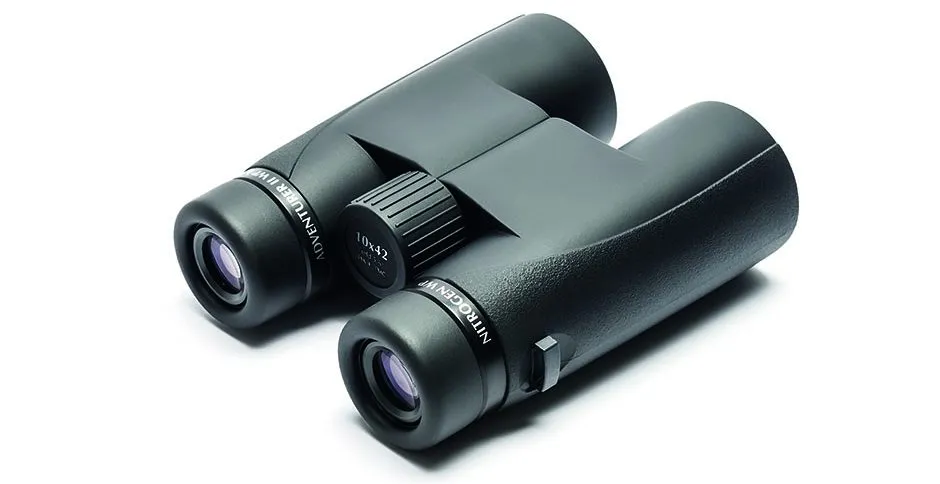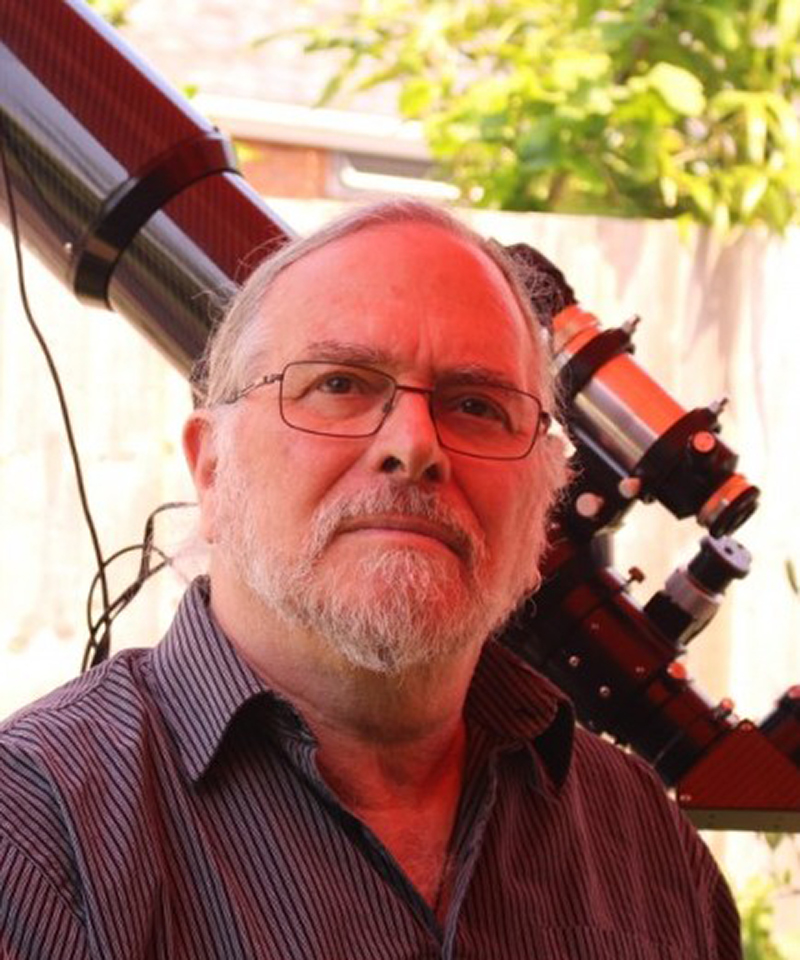Binoculars that are light, compact and waterproof are ideal ‘take anywhere’ instruments, which is why we were so keen to try the Adventurer II WP 10x42s – an updated model in Opticron’s entry-level ‘Adventurer’ roof-prism range.
The binoculars are supplied in a soft, lightly padded case with a belt loop, a detachable shoulder strap and a microfibre cleaning cloth.
The unpadded neck strap of the binoculars themselves is a comfortable 38mm wide.
When you hold the binoculars up to the light, each of the exit pupils is perfectly circular, indicating that the prisms are adequately sized.
We measured the exit pupil at 4.2mm, confirming that the binoculars are not stopped down internally to mask optical aberrations; this gives the Adventurer II a greater effective aperture, and hence potentially better light-gathering ability, than some binoculars that are nominally 10×50s.
The focus mechanism has a smooth, positive feel and in use we found that stars snapped to a crisp focus.
The images from each side were perfectly merged, showing that collimation was spot on.
When you refocus from a near object to a distant object, you will find that there is still three quarters of a turn of the focus wheel remaining.
If you are short-sighted, you will be able to use this extra focal range to observe without corrective lenses.
The eye relief (the ideal distance of your eye from the binocular lenses) is specified as 15mm but, even with the Adventurer II’s eye cups fully down, this was insufficient to allow the whole field of view to be visible with spectacles.
This could make them unsuitable if you need spectacles to correct for astigmatism.
Distortions be gone
There was very mild pincushion distortion noticeable at the edge of the field of view.
This makes straight lines appear to bow inwards, but also counteracts an unpleasant effect called ‘rolling ball’, which is present if there is no distortion.
Control of false colour was very good on axis, and even a gibbous Moon showed only minimal colour fringing when the limb or terminator was near the edge of the field of view.
False colour on bright stars such as mag. 0.0 Vega in Lyra was barely perceptible.
There was some lens flaring when the Moon was just beyond the field of view, and when placed centrally we saw the Moon surrounded by a crisp-edged ghost image.
These phenomena were not visible with Vega. Stars looked sharp over most of the field of view, with some field curvature, astigmatism and coma affecting the edge.
With the binoculars mounted, we could split Albireo in Cygnus into its two components (separated by 34 arcseconds) but only in the central half of the field.
The brighter of its stars appeared yellowish, while the fainter one looked white.
Colour rendition is quite good, and we found we could distinguish the colours of the three brightest stars of the Meissa Cluster (Lambda, Phi1 and Phi2 Orionis), even with a 60%-lit gibbous Moon only 20° away.
The brighter deep-sky objects were easily visible through these binoculars, as was Neptune.
Open clusters such as IC 1805 leapt out of the surrounding Milky Way.
The Dumbbell Nebula, M27 in Vulpecula, appeared as a tiny elongated cloud, easily distinguishable from stars.
Large asterisms, such as the Coathanger (Collinder 399), Kemble’s Cascade and Eddie’s Coaster were comfortably framed in the 5.6° field.
It is difficult to see how Opticron could deliver a better pair of entry-level, roof-prism binoculars at this price: they have a robust feel, yet are lighter and more comfortable to use than equivalent Porro-prism binoculars, while the nitrogen filling and the multi-stage twist-up eye cups are usually only found on more expensive instruments.
Phase coatings would have improved the crispness and the colour rendition, but at a price.
This could be an ideal first instrument if you are dipping your toes into binocular astronomy: it is good enough to give you a taste of the delights of this side of astronomy, and is also suitable for terrestrial interests.

Outstanding feature: Waterproofed and nitrogen filled
It is unusual to find binoculars that are waterproof and nitrogen-filled at this price point.
Although we don’t normally attempt astronomy in the rain, humid air and dew are a regular nuisance.
They are more likely to be a problem during the long, crisp, cloudless nights that favour astronomy in the winter months, which is why waterproofing is so useful – it will keep the moisture out of your instrument, where it could cause corrosion or create the conditions for fungus or algae to grow internally on the optics.
The dry nitrogen filling is an additional line of defence.
Oxygen is a reactive gas, but if binoculars are filled with nitrogen, the oxygen is expelled, and so another potential agent of corrosion is eliminated.
The roof-prism style helps to maintain the integrity of the waterproofing because the focusing mechanism is internal, making it relatively simple to keep the optical tubes gas-tight.
This combination of features should help to keep the internal components of your investment in good condition for many years.
Full aperture optics
Unlike many entry-level binoculars, the Adventurer II is not internally stopped down to mask or reduce image-degrading optical aberrations – irks such as spherical aberration, chromatic aberration and field curvature.
This gives it a greater effective aperture than some binoculars that are otherwise called 10×50s.
Right eyepiece dioptre
If you are sharing your binoculars with others, you will find that different people require different right eyepiece compensation.
The single projecting lug on the right eyepiece dioptre is far more useful than the more common knurled ring in that it gives you a sense of the direction of adjustment, even with gloved hands.
Twist-up eye cups
The twist-up eye cups have a 7.5mm range of movement, with two intermediate click-stops.
This makes it easy to find an optimal setting for your eyes and to return to it, by feel, in the dark.
Their rubber covering feels comfortable and will not chill your eye sockets on cold nights.
Tripod bush
You will be able to see fainter objects and split closer double stars if you mount your binoculars.
Under a screw-out cover at the end of the hinge is a metal bush; this is threaded for a standard 0.25-inch Whitworth thread for a tripod adaptor L-bracket.
Lens covers
Objective lens covers are probably the most commonly lost binocular accessories: if they don’t fall off, they get taken off and forgotten.
These ones are tethered, so you can leave them attached when you are observing.
They also fit very well and so offer very good protection against dust and moisture.
Vital stats
- Price £99.00
- Aperture 42mm
- Weight 623kg
- Supplier Opticron
- Telephone 01582 726522
- Websitewww.opticron.co.uk
This review originally appeared in the December 2017 issue of BBC Sky at Night Magazine
